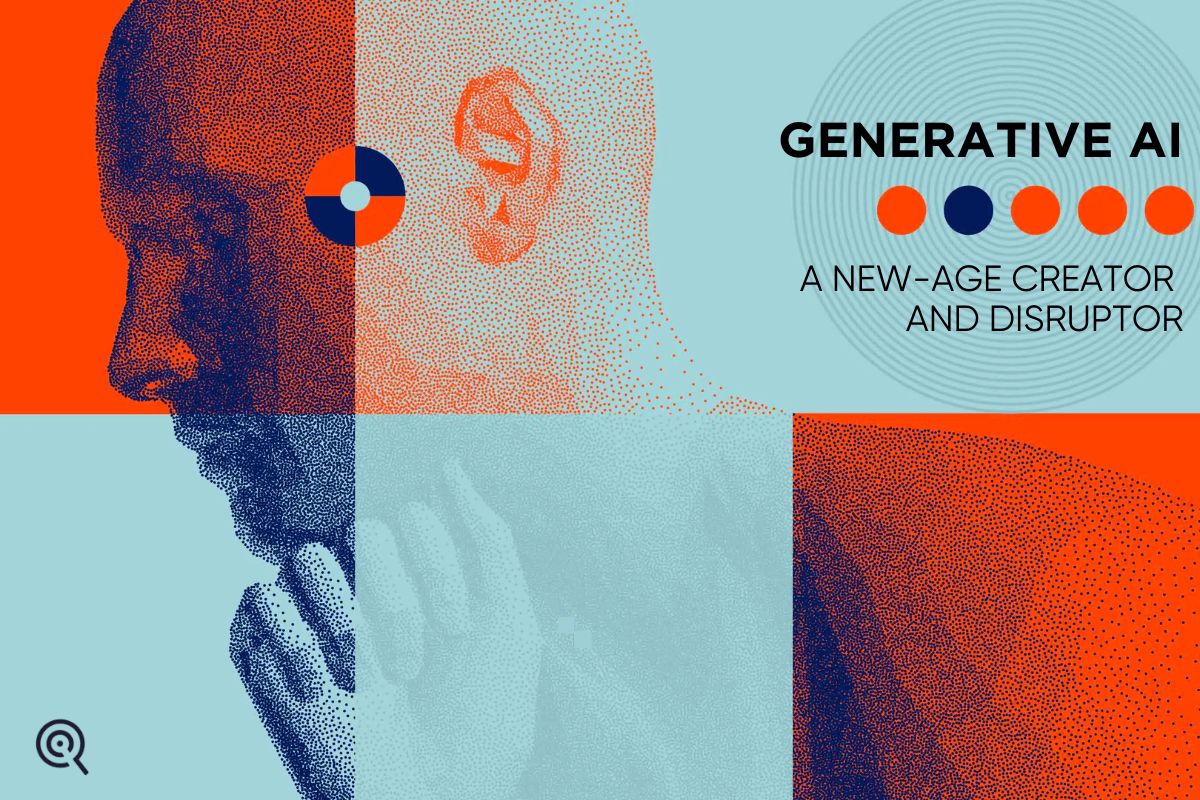
Generative Artificial Intelligence has become an explosion of capability. Things that humanity couldn't possibly think of, are coming to life with generative AI. Dall-E, Stable Diffusion, GPT-3, OpenAI, Hugging Face, and dozens of other projects, startups, and organizations are formulating AI engines that create art, make music, generate synthetic humans, birth artificial influencers/celebrities, literally generate video from text, and threaten to upend our notions of creativity, art, public domain, copyright, and the nature of reality itself. What is really exciting is that AI is at that stage where it can start writing code to better itself - a true human trait.
If we are to go by the market predictions, generative AI is the new “gold rush” in Silicon valley. The economic slowdown isn’t stopping investors; thousands of dollars have been injected towards generative AI startups in the high-potential areas such as writing code like a software engineer, chatting like a company service representative, generating images like a photographer, creating original music like an artist, composing text like a human sales rep and plausibly even diagnosing disease like a doctor.

The Investment Landscape
A number of generative-AI startups received nine-figure investments in the last few months. Stanford student David Song maintains a growing list of 140 startups tackling copywriting, coding, gaming, graphic design, and medical applications.
- In a seed round valued at $1 billion, Stability A, the London-based company behind the open-source text-to-image generator Stable Diffusion, raised more than $100 million. Currently, the company has an estimated 100 employees, and the funds will be used to develop the company's text-to-image model, DreamStudio.
- A $125 million Series A round was raised by Jasper, which serves the content-creation market. The Chrome extension generates copywriting suggestions ranging from a single word to an entire article based on OpenAI's GPT-3 language model. There are more than 70,000 paying customers for the company.
- Microsoft is poised to further inject capital into OpenAI having previously invested $1 billion back in 2019. According to the reports, Google is considering a $200 million investment into Co:here - a natural language processing startup.
Simultaneously, established companies, too, are looking for ways to capitalize on AI’s emerging generative capabilities.
- Microsoft has added DALL·E 2 to its invitation-only Azure OpenAI service, which also includes GPT-3. Furthermore, it is integrating the image generator into Designer, an app that automates graphic design for social media.
- Shutterstock, an image distributor, will allow users to create custom images using DALL·E 2. The company wishes to compensate creators whose work was used to train their service.
- Getty Images, a competitor of Shutterstock, is adding AI-powered image editing tools from Bria, an Israeli startup.

Notable Startups to look out for
Insilico Medicine
Insilico Medicine provides AI solutions to the top pharma and biotechnology companies. The company aims to accelerate drug discovery and development, and transform the discovery of therapeutics and materials. Using deep learning to discover new drugs, provide personalized healthcare, and treat ageing is one of their main goals. The organization has developed a comprehensive drug discovery engine, which uses millions of samples and multiple data types to discover disease signatures and identifies the most promising targets for billions of molecules that already exist or can be generated de novo with the desired set of parameters.
Paige.AI
Launched by Memorial Sloan Kettering in early 2018, Paige is developing novel deep-learning algorithms based on convolutional and recurrent neural networks to learn efficiently from an unprecedented wealth of visual and clinical data. Cancer diagnosis, treatment, and biomarker discovery are being transformed by the company's powerful, clinical-grade computational technologies.
Mostly AI
The Synthetic Data Engine by Mostly AI allows the simulation of realistic & representative synthetic data at scale, by automatically learning patterns, structure and variation from existing data. To retain valuable information and prevent the re-identification of any individual, it utilizes state-of-the-art generative deep neural networks with inbuilt privacy mechanisms. In this way, it creates data that is as-good-as-real but can be processed, analyzed, and shared freely.
Synthetaic
Synthetaic grows high-quality data that unlocks impossible AI. In some of the most high-stakes use cases for artificial intelligence, sample islands have prevented high-quality predictive modelling. For both still and moving images, there is simply not enough data to train networks effectively.
Eva Engines
Eva is a fashion tech and deep tech start-up based in France. The company's first product uses facial recognition and artificial intelligence to help fashion brands, casting agencies, and models recruit models through the use of neural networks trained on mannequin faces.
Generative AI is only the tip of the Iceberg
The concept of generative AI has been around, however, it looks promising in today’s era more than ever. Generative AI is revolutionizing how humans experience the internet and the world at large. The investments in artificial intelligence swelled from $12.75 mn in 2015 to $93.5 bn in 2021 and it is expected to further grow to $422.37 bn in 2028 opening many avenues and doors for those seeking to understand and implement artificial intelligence.
Generative AI will soon be able to write scientific papers and visual design mock-ups, according to Sequoia; and by 2030, it will be able to design, code, and write better than human professionals. Slowly but gradually it will change the way you and I work. Although the concept of generative AI is at its “reactive model” stage which means it will only react to produce the output according to what is given. However, with further developments, experts believe that generative artificial intelligence may eventually replace human capital to a large extent. These are the possibilities that investors and leaders are forecasting, there is a higher likelihood of this just being the tip of the iceberg. What Generative AI will truly do for machines and humanity will unfold better with time.
Authored by Richa
For more information, please reach out to the Marketing Team.


